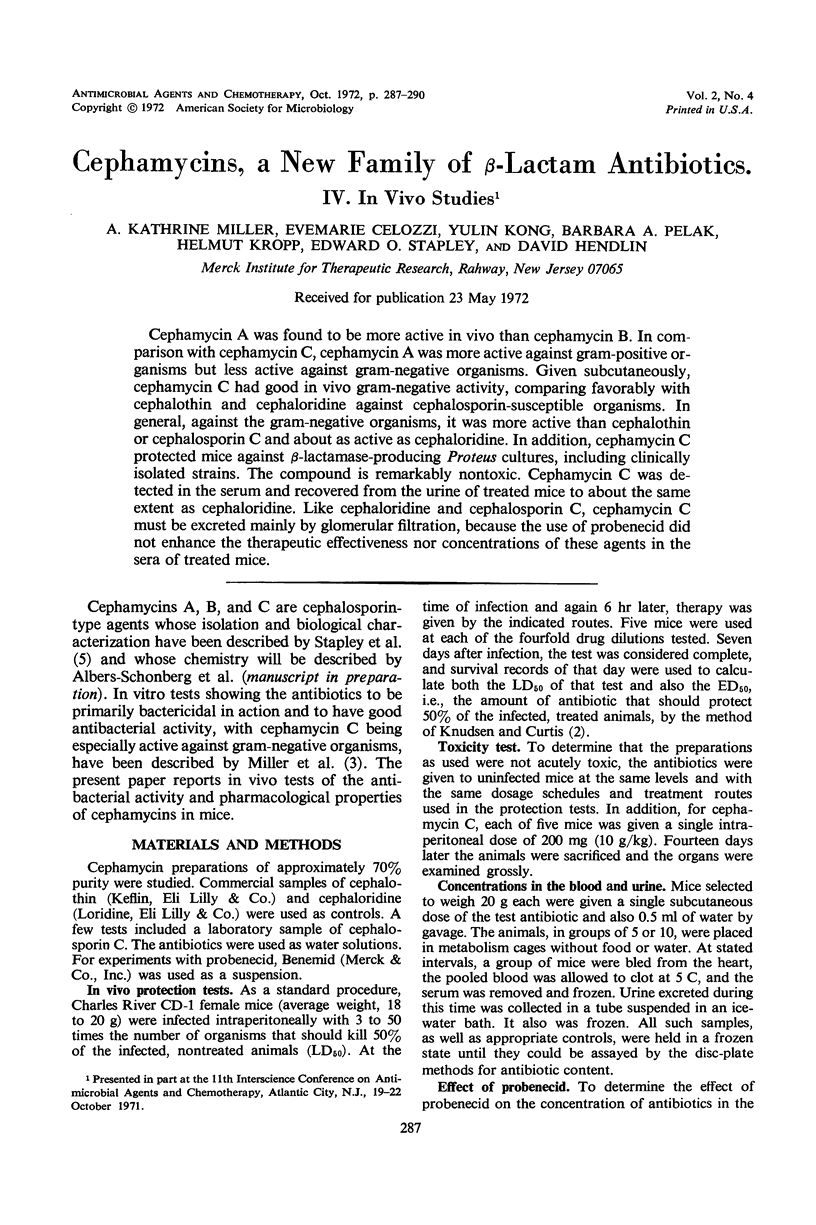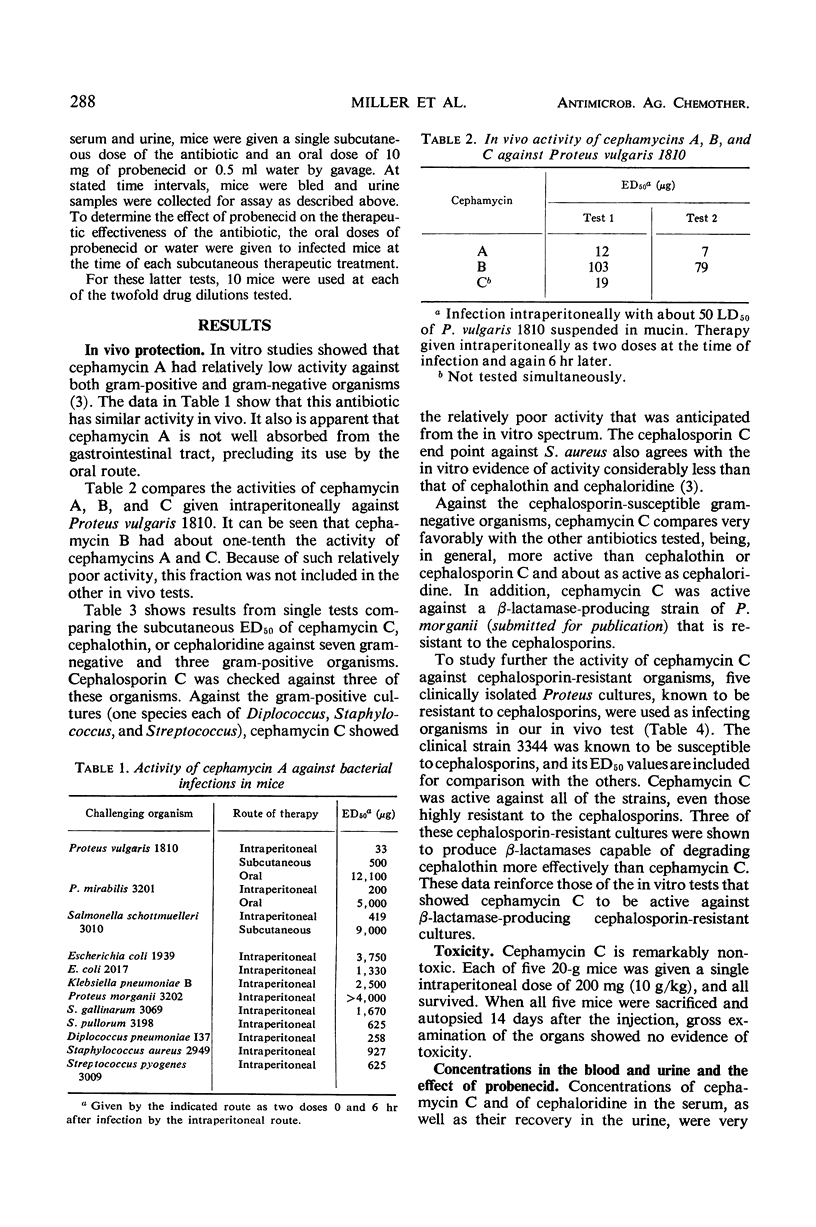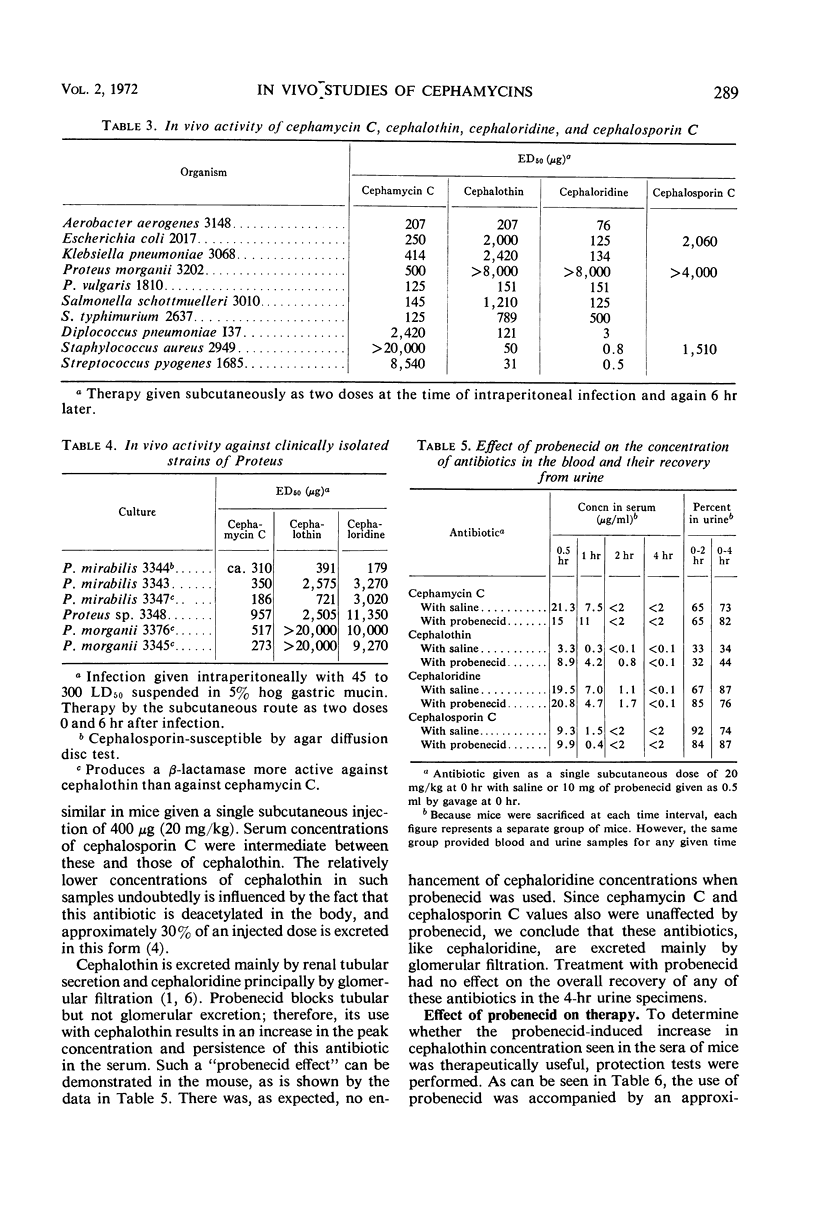Abstract
Cephamycin A was found to be more active in vivo than cephamycin B. In comparison with cephamycin C, cephamycin A was more active against gram-positive organisms but less active against gram-negative organisms. Given subcutaneously, cephamycin C had good in vivo gram-negative activity, comparing favorably with cephalothin and cephaloridine against cephalosporin-susceptible organisms. In general, against the gram-negative organisms, it was more active than cephalothin or cephalosporin C and about as active as cephaloridine. In addition, cephamycin C protected mice against β-lactamase-producing Proteus cultures, including clinically isolated strains. The compound is remarkably nontoxic. Cephamycin C was detected in the serum and recovered from the urine of treated mice to about the same extent as cephaloridine. Like cephaloridine and cephalosporin C, cephamycin C must be excreted mainly by glomerular filtration, because the use of probenecid did not enhance the therapeutic effectiveness nor concentrations of these agents in the sera of treated mice.
Full text
PDF



Selected References
These references are in PubMed. This may not be the complete list of references from this article.
- Kislak J. W., Steinhauer B. W., Finland M. Cephaloridine activity in vitro and absorption and urinary excretion in normal young men. Am J Med Sci. 1966 Apr;251(4):433–448. [PubMed] [Google Scholar]
- Miller A. K., Celozzi E., Pelak B. A., Stapley E. O., Hendlin D. Cephamycins, a new family of beta-lactam antibiotics. 3. In vitro studies. Antimicrob Agents Chemother. 1972 Oct;2(4):281–286. doi: 10.1128/aac.2.4.281. [DOI] [PMC free article] [PubMed] [Google Scholar]
- Saslaw S. Cephalosporins. Med Clin North Am. 1970 Sep;54(5):1217–1228. [PubMed] [Google Scholar]
- Stapley E. O., Jackson M., Hernandez S., Zimmerman S. B., Currie S. A., Mochales S., Mata J. M., Woodruff H. B., Hendlin D. Cephamycins, a new family of beta-lactam antibiotics. I. Production by actinomycetes, including Streptomyces lactamdurans sp. n. Antimicrob Agents Chemother. 1972 Sep;2(3):122–131. doi: 10.1128/aac.2.3.122. [DOI] [PMC free article] [PubMed] [Google Scholar]
- Stewart G. T., Boyd J. F., Butcher B. T. The place of the cephalosporins in medicine. Postgrad Med J. 1970 Oct;(Suppl):133–137. [PubMed] [Google Scholar]


